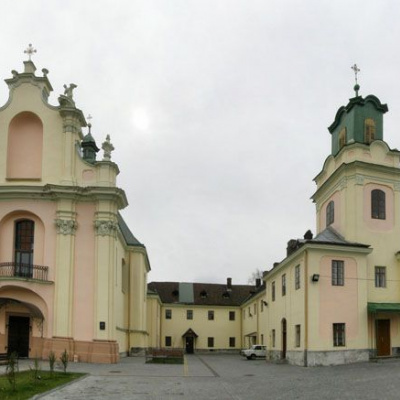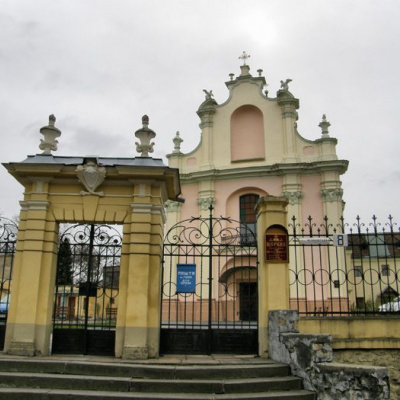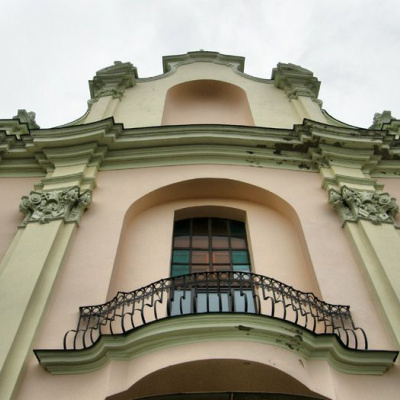St. Martin's Church, Lviv
St. Martin's Church (Polish: Kościół św. Marcina ) is a Baroque architectural monument in Lviv. It is located in the Pidzamche neighborhood at 8 Zhovkivska Street. Zhovkivska Street received its historical name in 1993. It is historical because it was the way to get to the city of Zhovkva in the 19th century. But in those days the street was called Korytna (after the Poltva river arm). Since 1885 the street was named after St. Martin (after the church). In the Soviet period, the street was renamed Dekabrystiv.
The wooden church of St. Martin was built at the expense of the Polish nobleman Aleksander Zborowski in 1630 for the Catholic monastic order of the Carmelites of the Shoe. It acquired its modern appearance after it was rebuilt in stone in 1736 after a fire in 1648. The funds for the construction of the church were provided by Jan Rubczynski.
The present church building was built for 17 years (1736-1753). The money for the construction was allocated by Jan Rubczynski. The architect of the new Baroque church was Bernard Meretyn.
St. Martin's Church was painted in the 18th century by M. Stroinski and J. Mayer. Unfortunately, their works have not survived to this day. Ivan Pinsel contributed to the sculptural decoration. His work "The Crucifixion" is now kept in the Pinsel Museum.
In the 1990s, the building was transferred to the Pentecostal community of Christians of Evangelical Faith.
The building is constructed of stone, single-nave, rectangular in plan, with a signature above a high gable roof. The façade of the church is divided by pilasters, the original capitals of the Ionic order, which are composed of military reinforcement. The interior of the church was decorated with frescoes by the artist Josef Mayer in the XVIII century (1747-1748). The rococo vaults of the church were once painted by Martyn Stroinskyi. He is also the author of the facade paintings, which could barely be seen in the early 1920s. The paintings of the rococo vaults were restored by Theophilus Kopystynskyi in 1886. The church is adjacent to a two-story building with cells, which has a bell tower on the main façade.
Zhovkivska Street is a side street of Bohdan Khmelnytskyi Street. To get to the church, you need to walk past the Hnat Khotkevych Palace, then go down Dolynskoho Street to Bohdana Khmelnytskoho Street. Here you will see another interesting historical landmark - the Church of Paraskeva Pyatnitsia. Walk a little further and turn left onto Zhovkivska Street.
One thing to warn you about - don't forget to take a map with you. You can easily get lost in the intricacies of Lviv streets.




